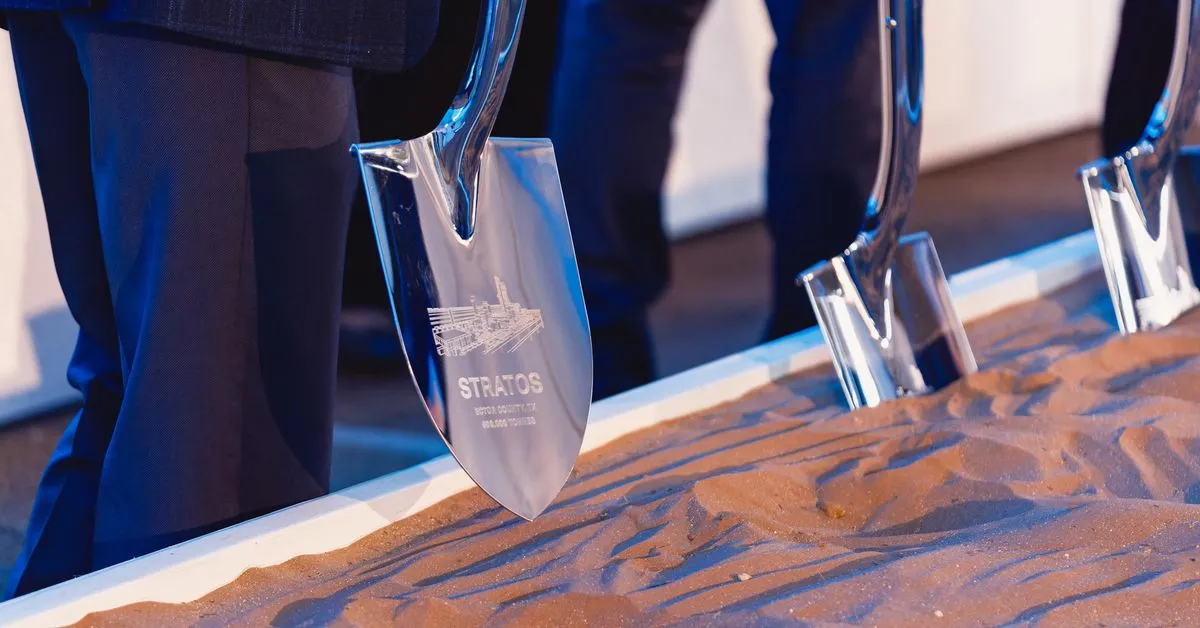If only there were a Kingdom whom we could engage, one that naturally and enthusiastically removes carbon dioxide from the air. There must be an answer, maybe if we plant a seed, metaphorically speaking, a long standing solution will grow to fruition.
Sounds like a great idea. Good thing there’s no money in “harvesting” said hypotheticals.
That sounds like a lot of work though
That’s the nifty part, members of the Plant Kingdom do all the heavy lifting on this. We just need to assist a bit.
“A bit”. Do you realize the sheer number of trees you would have to plant to offset our carbon? And then, eventually, those trees die and the carbon is reintroduced. Trees never have been and never will be the answer to CO2 that was previously sequestered underground over millenia.
LoL, try this: Carbon Offset Tree Planting Calculator: Find How Many Trees to Plant https://8billiontrees.com/carbon-offsets-credits/carbon-offset-tree-planting-calculator-find-how-many-trees-to-plant/
or if you prefer MIT:
How many new trees would we need to offset our carbon emissions? https://climate.mit.edu/ask-mit/how-many-new-trees-would-we-need-offset-our-carbon-emissions
““Planting trees where they’ve been lost is often a good idea, and that will take up CO2,” Harvey says. “But a much more efficient thing to do, to have a larger effect for the same effort, is to stop cutting down trees. It’s almost silly to think about planting a huge number of new trees while we’re just burning and destroying them everywhere, releasing carbon at rates that are much higher than what new growth would take up.””
And as other’s have observed, it needn’t only be trees.
I’m a solarpunk who lives in a tiny apartment and bikes everywhere and has 100% renewable energy’l production and heating. Vegetarian also, but lots of dairy
The calculator still said I needed 1.8 earths to offset my lifestyle.
What do they want me to do, keel over and die? My carbon impact is almost zero, and is actually negative with my research and contributions into 3D photovoltaics.
I don’t think “planting 200 trees per year per person” is tenable. I think slapping a huge fuck-off fine on a major polluter is a much easier and effective strategy.
My personal yearly CO² impact is dwarfed by a single container ship travelling just 8 miles burning bunker oil.
Personal responsibility in this case isn’t the answer, social responsibility is. No one human being alone could damage the environment to this extent.
Yep, that was my original point. Trees just can’t cut it. They have such a little impact they’re almost not worth even discussing. Far larger gains can be found elsewhere.
So ride bikes? What large gainz are you thinking of? Can’t leave me hanging, Friend.
Yeah, like I said, a ridiculous amount of trees according to that calculator. That calculator said I’m in the top 5% and would take just over 200 trees a year. If we make the assumption that all of the top 5% also need 200 trees a year (it’smuch more likely that number sky rockets as the percentage gets lower), that’s 70,000,000,000 trees a year. To put some scale to that it looks like 14m hectares were lost to deforestation in 2010 and from what I see the most generous number is about 900 trees per hectare. That’s 12,600,000,000 trees. Stopping all deforestation won’t even come close to covering 5% of the CO2. Again, trees never will be enough to make up for the CO2 being pumped out of the ground and into the air.
Ok, so you don’t like trees. I get it. I still think they are part of the larger solution. And, what do you like? How are we going to solve this? Cuz, we are going to solve it, dancing joyously all the way.
I didn’t say I don’t like trees, just they aren’t the solution. They’re often used as green washing and delay actually effective things like carbon cap and trade. I don’t know what the solution will be. If it were simple enough for me to solve it, it wouldn’t be a problem we’re facing.
Expensive is the wrong word here, most of these calculations are not about money, but energy, they are about doing stupid things like using power from burning coal to collect CO2 emitted from it…at a net waste of energy. It literally emits more CO2 than doing nothing (unless all your energy and factories producing solar panels and wind turbines and cars and infrastructure already run on green energy). It is only good for greenwashing in the near to medium future.
If only there was a way to turn CO2 back into a solid form of carbon, release O2, and it could all be powered by the sun, for free.
What a world that would be.
I am weak in science. Is this sarcasm or does a method really exist? I am extremely curious. Please enlighten me.
deleted by creator
I feel extremely dumb now. I am gonna take my leave.
😂🙏🏽
Trees end up releasing a lot of carbon down the road
We’re releasing a lot of carbon right now.
The neat thing is when a tree dies and starts releasing it again, the trees around it absorb it, and here’s the best part: They plant new trees all on their own.
Doesn’t help through forest fires
But the tree angle is mostly used by polluters to say they are carbon neutral because they planted some trees somewhere so they can continue polluting
Not saying you are one of them, just to not put so much stock in it when we should be aiming for elimination
I mean I’ll agree 100% that carbon credits or whatever they’re called now is bollocks.
But more trees can’t hurt. And they’re nicer than endless fields of corn.
It also doesn’t work.
Yeh, but then the Oligarchy can get the public off it’s back, regardless of the effectiveness. I am sure in a few years when things keep getting worse, they will come up with another “solution” which does not address the root cause.
Algae does it for free on a massive scale.
Dollar for dollar, planting trees works better then current CO2 connectors. Algae could be industrialized as a source of carbon neutral fossil fuel alternative.
Indeed, and using algae based fuels would make it carbon negative because it would in turn store the carbon it releases cyclically. Algae can be dehydrated, compacted, and stored for extremely dense carbon storage. Planting trees is good as well, also for ecological reasons.
Any discussion of rehabilitating from climate change should include rewilding and the restoration of lost wetlands, a major carbon sink for our planet.
We could grow more hemp too, more efficient at carbon removal than trees
I wonder how expensive the damages from climate change will be.
across the US. Big companies including Microsoft and Amazon are also paying startups to capture some of their pollution. And the fossil fuel industry has embraced the technology, even using it to market supposedly more sustainable oil. Apparently, that still isn’t enough.
“More sustainable oil”. Sure dude. Just keep doing the same thing you’ve always done that cause this problem in the first place. But wait…
There are so many limitations to the most studied CDR techniques — including tree plantingand** machines that capture CO2 **— that Romm says the money would be better spent researching other ways to reduce greenhouse gas emissions.
Oh, so do nothing while things keep getting worse? We need to hemm and haw over the things we haven’t thought of that will also be too expensive?
But why put a Band-Aid on the problem if we aren’t stopping the bleeding?
Well, because it’s not a perfect solution we should do nothing is the gist I’m getting from this whole thing. Other than what we’re already doing - attempting to lower emissions.
Lowering emissions doesn’t increase shareholder value. Try again, and this time think of the shareholders.
/s (obviously)
the problem isn’t that it’s expensive it’s that it requires us to deal with more volume than every other industry combined through history to even start to think about making a difference.
and you’ll notice it talks about the US hitting it’s climate goals … rich nations will need to do a lot of heavy lifting for the rest of the world for it to be worthwhile not just hit their own targets then say “Well, Somalia isn’t pulling it’s weight so we’re all just going to die I guess but at least we did our small part”
This is also related to the ultimate bullshit about any kind of carbon credits.
The only way it makes sense to sell a carbon credit, at least in a world paradigm (such as it is under Paris) where all nations need to get to zero, is to price those credits backwards from the last ton of CO2 you are going to remove. Because all the tons need to be removed. In the most honest, true, legitimate scenario, selling a credit is taking a loan out against yourself which will HAVE to be paid back eventually.
So the cost of a carbon credit, assuming it actually represents the thing it claims to represent (hint: they don’t), should be as expensive as it is per ton of DAC, since DAC is certainly the most expensive way to mitigate emissions.
That means they should be going at something like $500/ton or more in developed nations. Plus the interest on the loan.
In poorer nations, it’s possible that those last tons will be cheaper to remove by nature of their lower costs. Maybe that DAC facility built in Indonesia will have lower operational costs than the one you build in Norway. But in that case, selling the credits from Indonesia to Norway makes even LESS sense because now Indonesia is effectively going to have to pay for that last ton to be removed from Norway… where it’s WAY more expensive.
If we are to actually believe that carbon credits are what they purport to be, they are usury. They are colonialism. I guess we should be glad they’re just regular scams and not that, eh?
So how do we fight climate change?
Not that I can really do anything, I’m just curious on how exactly we should do after killing all the rich people and using their wealth
In the US? The IRA is a very good model. Hard to overstate what a good piece of legislation it is. Doesn’t go far enough, but it makes some serious strides.
Promote electrification. Renewable energy generation is already cheaper than fossil fuel, so with minimal additional incentives the market is going to wipe out grid fossil energy production over time. Calibrate your incentives and penalties to make it happen as fast as possible – we aren’t there yet, but we’ve taken major strides.
You’ll need to do a LOT of grid enhancement in the process. As more electrification occurs, you’ll need better transmission of that electricity. A lot of the utilities have vastly miscalibrated incentive structures right now, which favor building major capital projects over doing repair and maintenance. Better regulation can fix this, though some of them are so incompetent and corrupt that they long-term probably just need to be nationalized (looking at you Central Maine Power/Versant). Re-conductoring is a good place to start for this because it’s cheap and can increase current grid capacity by something like 2-3x. Large grids with a good mix of wind/solar and dynamic pricing should be largely resistant to any intermittency issues of renewables, by some energy storage sugar on top will take care of that.
Side note: the main thing pumping the breaks on more renewable energy generation facilities is not actually a lack of demand, it’s interconnection queues.
Another prong is urbanization. You massively reduce emissions by reducing vehicle miles traveled (VMT). Good urbanism reduces VMT, creates more financially sustainable towns, and also more pleasant, safe, and healthy environments for the average person to live in. Strong Towns has a lot to say about how you can start pushing for better urbanism right now. There’s little more you can do for total emissions as an individual than helping your city avoid expensive and dehumanizing sprawl; show up to your MPC/city council meetings and advocate for good urban policy.
We can further cut back on emissions by reducing the reliance on interstate trucking for freight. Trains can (and should) be electrically-powered and are FAR cheaper for a society. Delivery “last miles” can be done by various EVs pretty easily. For the US, this pretty much requires nationalization of the right of way/track (and then, ideally, deregulation of the freight operators). That is, make the train network function a lot more like the current highway network. Bonus points: ~80% of microplastics in our water are just tire dust. Let’s do less of that.
Industrial heat is another major pillar. Places like steel and concrete plants need to switch to heat batteries powered by electricity instead of fossil fuels. This tech is ancient and reliable, but still not at scale, but at least some promising pilots are already happening. And the minute any of them work at all, they’ll take over fast. Because renewables + heat batteries ought to be a lot cheaper and more reliable than furnaces + fossil fuels once operating at scale. And the facilities will also be able to make use of aforementioned renewable intermittency to save even more money (e.g., charging their heat battles at nadir hours where energy prices go to near 0 or even negative).
We’ll also need to do some stuff that is politically sketchier. Reducing certain kinds of consumption (industrial beef, fast fashion, tariff-loophole import goods, etc). But those are higher-hanging fruit and it’s ok to procrastinate on them a bit if they’re too politically difficult right now.
Well the first step is to reduce or at least drastically eliminate the amount of CO2 that is being released in the first place. Removal of carbon from the air is necessarily going to have to be a down the road plan. It literally cannot happen to any scale if we are still relying on fossil fuels in the first place.
The point isn’t to fight climate change, it’s to have us chasing hope while they keep cashing in the petrobux.
Aaaaaand here’s Singapore, not complaining about cost: https://www.mayerbrown.com/en/insights/blogs/2024/04/seas-the-future-singapores-visionary-leap-into-oceanic-carbon-capture
Yeah but venture capitalists can’t make money off of it if they don’t! Think of the share holders!
It’s like addressing a wound by mopping up all the blood and injecting it back into your body. Good luck.
Its Not that hard to understand. Since the industrial revolution we’ve taken energy out of a system that, as a pollutant, generated CO2.
If you want to remove the excess CO2 we generated we’ll have to put back at least the same amount of energy to reverse that process. Adding in typical losses like heat, you can triple or quadruple that.
So let’s say we need four time the energy that humanity had generated since the industrial revolution to get co2 back to pre industrial levels. Great. ALL this energy must come from non CO2 sources like solar, wind, nuclear, hydro, because of not you’re just spending 100 units of CO2 to capture 30…
This already means that currently, carbon capture is a bad idea. Any energy spent on that is energy that generated more CO2 than it will capture and even if it is renewable, or nuclear, it would be better spent on something else and that something else would still spend 100 units CO2 for the 30 you capture.
So this means that step one, before really starting to capture CO2, is getting ALL of your energy generation where possible (airplanes, for example, cannot go electrical). We’re not even at step 0.1, honestly.
We need to get rid of all fossil fuel cars, trucks and power plants before we can even start thinking about fixing this and we’re literally a sliver in that direction, currently.
So can we please PLEASE start with this damn conversion already?










